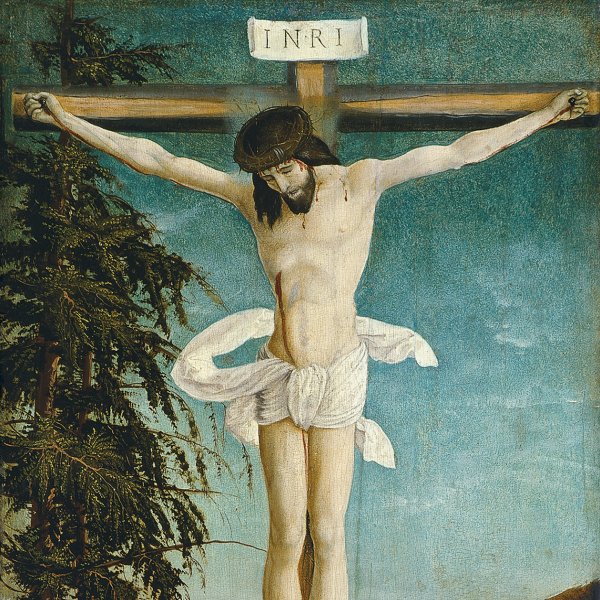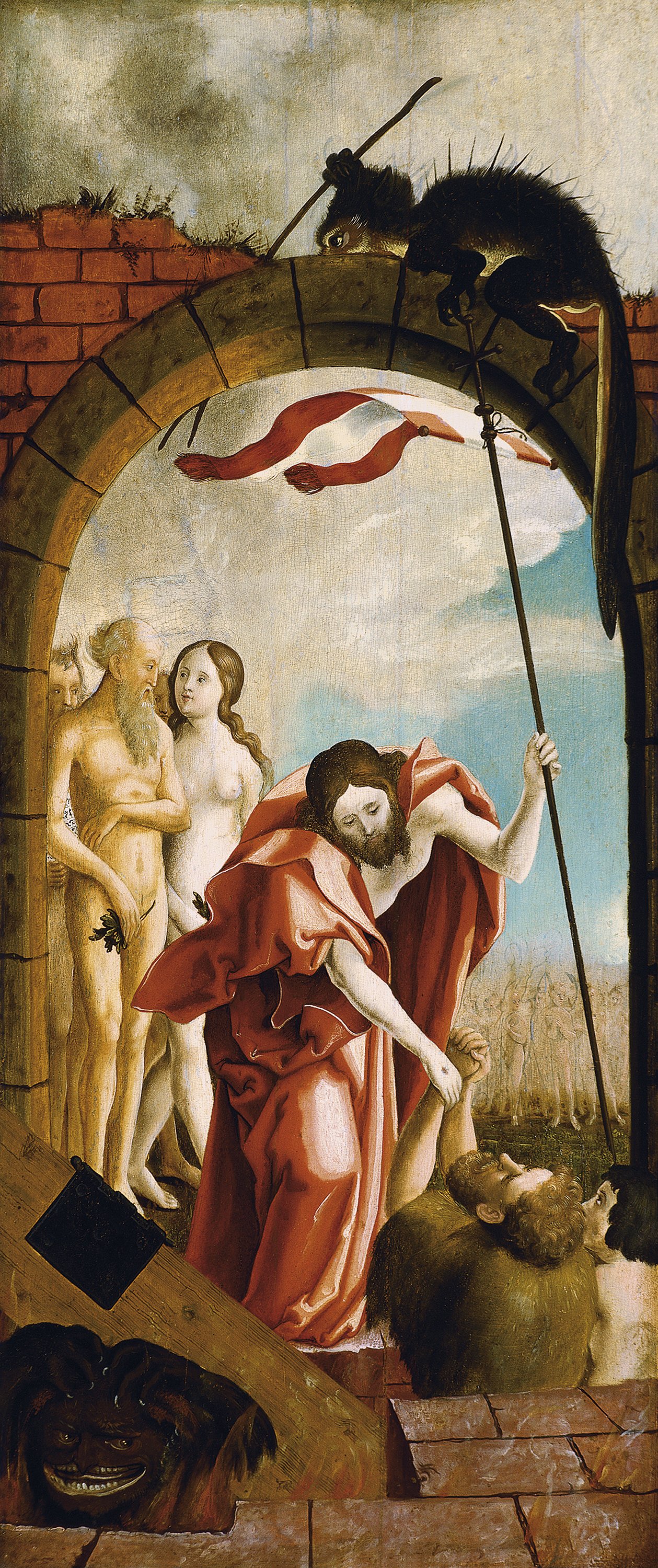Christ in Limbo
The Crucifixion and Christ in Limbo were the interior wings of an altarpiece. The exterior wings depicted Christ as the Man of Sorrows and the Virgin Dolorosa and were painted in grisaille on a yellow background, according to Alfred Stange. The overall composition of the altarpiece is known from documentation and photographs taken in 1966 before the panels were separated and the exterior images lost. The present two panels are based on Dürer’s depictions of these scenes in his Small Passion, albeit with some changes. In The Crucifixion, for example, the artist introduced a background landscape that is divided by the central element of the cross. In contrast to Dürer’s print, this anonymous artist located Christ’s feet on the same level as the heads of the Virgin and Saint John and, in the lower part, replaced the skull in Dürer’s scene with some wooden wedges. Another difference is the way the haloes are painted, as here they take the form of glowing nimbuses around the heads of some of the figures. In the scene of Christ in Limbo, the most obvious departure from Dürer’s version is the importance given to the devils in the lower right zone, as well as the more pronounced musculature of the figures.
NH
The present interior panels are relatively close copies of two scenes from Dürer’s Small Passion. The modifications made by this anonymous artist are due to the long narrow format of the panels into which he added some new elements such as the landscape behind the Crucifixion. In this scene the vertical post of the cross is higher than in Dürer’s original as a result of which Christ’s feet are level with the heads of the Virgin and Saint John. In contrast to the original print, the holy woman behind the Virgin covers part of her face with her cloak. Apart from these small differences, however, it is the landscape that is the most innovative element on the part of this unknown painter. It continues up to the foreground where the skull found in Dürer’s print has been replaced by three wedges that support the cross and by an area of ground with small stones and a few flowers. Lübbeke drew attention to another innovation: the original way in which this artist conceived the haloes, painted as luminous glowing areas behind the heads.
The most striking modifications in the other panel, depicting Christ in Limbo, are to be found in the lower left corner of the panel in which the artist has given more importance to the demons than in Dürer’s original. The physical types of the figures are also different and are much less muscular than in the print. The year to which these paintings are approximately dated, 1520, derives from a date that appeared on the exterior right wing depicting The Virgin Dolorosa. From Alfred Stange’s description of the two exterior panels we know that the figures were painted in black and white on yellow grounds.
These two oils on panel were published as works by the Master of Ulm influenced by Martin Schaffner when they were in the collection of Professor Freiherr von Bissing in Munich. It was Alfred Stange in 1966 who suggested an attribution to Hans Maler, a proposal retained in the catalogues of the Collection until 1991. At that point the attribution was returned to an anonymous artist familiar with the work of Martin Schaffner. Both panels were acquired for the Collection in 1967.
Mar Borobia






